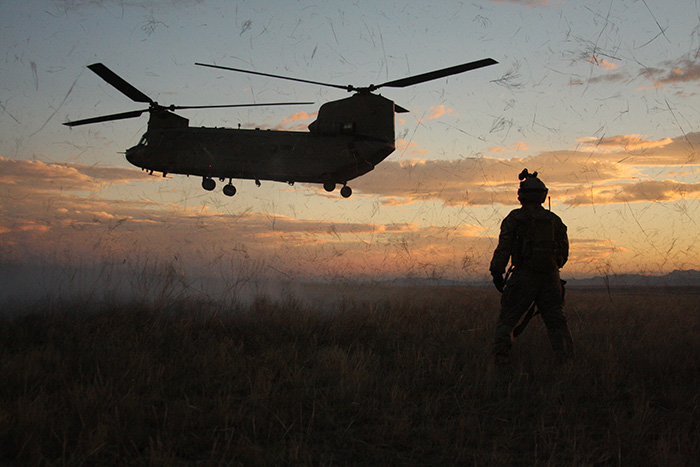Process, Patience the Key to Aiding Combat Injured
Standing before a crowd of more than 300 people on the first day of the 2016 Military Health System Research Symposium, Israeli Defense Forces Maj. Avi Benov was quick to blame one man for the current state of forward surgical care across the globe.
"It's Chuck Norris's fault," said Benov, lightheartedly referring to the U.S. movie icon revered for his indestructible persona. "Everybody wants to be Chuck Norris because Chuck Norris doesn't take any pain medication."
Such a candid assessment of the mindset of the current warfighter is key in developing the knowledge and the tools required to both stabilize and transport warfighters injured on the battlefield; a lynchpin effort in maintaining force strength and resilience in combat situations.
"The knowledge part is key," said Lt. Col. Antoinette Shinn, the newly-installed manager of the Forward Surgical-En Route Care Portfolio for the U.S. Army Medical Research and Materiel Command. "You can't create solutions unless you know what the problem is first."
To that end, a round-up of the contemporary, military-wide research efforts in the forward surgical and en route care areas features a renewed attention to process; or, more specifically: how a warfighter is treated on the ground, in the air, and perhaps most importantly, how an injured warfighter is transported to safety in the first place.
As such, current investigations focus on the expanded use of pain medication on the battlefield, the pre-hospital use of blood products, and the improvement of in-transit stability for transportation options like MEDEVAC helicopters. While supporting research for these efforts is intriguing, study authors agree more time and information is required before conclusions are drawn.
"We have to find ways to improve and increase data collection in these environments," said Lt. Col. Samuel Galvagno during his own presentation. "Otherwise we won't know how to tackle the problem."
With such strong and pointed direction –and, of course, an understanding that action-hero bravado doesn't solve real-world problems– the FSERC Portfolio under Shinn's management is constantly looking to review and re-focus its unique lines of effort in order to stay on the leading edge of innovation.
Said Shinn of those efforts, "We're on the right track."
MHSRS is DOD's premier scientific annual meeting, which combines three previous conferences, including the former Advanced Technology Applications for Combat Casualty Care Conference; the Air Force Medical Service Medical Research Symposium; and the Navy Medicine Research Conference. By combining these conferences into one event, the meeting serves as a critical strategy session for leaders to set future milestones for the Department of Defense's deployment-related medical research programs, centered on the needs of the Warfighter.















